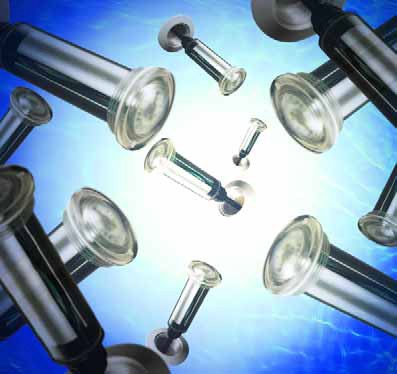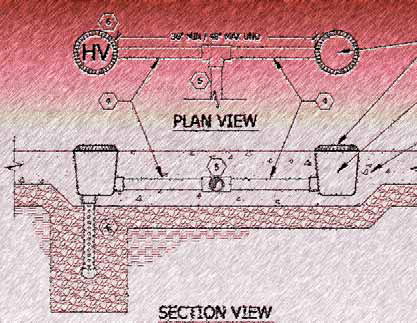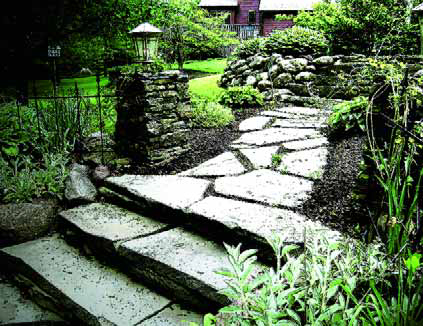safety
It has always bothered me: Why do we take devices that draw electrical current and install them in aquatic environments where humans get in the water? Even if precautions are taken, isn’t this risky business? To be sure, suppliers have come up with all sorts of measures designed to protect bathers from any potential hazard, and I have nothing but praise for the ingenuity they’ve displayed in surrounding their products with safeguards that minimize concern. But based on my own observations and experience, I must say that
From my perspective on the design and installation side, I see bringing landscape lighting to a property as a process that includes careful planning and execution as we compose the different scenes and lighting elements; count and select fixtures; lay out the power-distribution system; install everything properly; and, finally, fine-tune it all before turning things over to our clients. Looking at it from the other side, it’s been my observation that clients approach these projects with an equivalent level of deliberation: Even among relatively affluent clients, landscape lighting represents a significant
Certainly one of the world’s most unusual watershaping achievements, ‘Le Reve’ is a Las Vegas-style aquatic production that carries audiences into an amazing dream world of water, light, music and incredible acrobatic skill. To achieve the water effects, former Cirque du Soleil producer Franco Dragone turned to Aviram Müller and Canada’s Kaarajal Design Aquatique – and the result is a marriage of watershaping art and technology unlike any other. Franco Dragone’s design team first contacted me late in 2003. His company, which organizes groups of design firms to create some of the world’s most elaborate stage productions, was working on a new Las Vegas extravaganza for hotelier Steve Wynn. Wynn’s properties are famous for their water effects, including the wonderful fountains in front of Bellagio on the Las Vegas Strip. I was told that his then-current project, the Wynn Resort, was to feature similarly spectacular water elements – one of which was to be
I hadn't planned on breaking away from my coverage of the National CAD Standard anytime soon, but recent events - including the arrest of a pool builder on charges of manslaughter in a suction-entrapment incident - compelled me to do otherwise. As I started composing this column, my plan was to call it "Entrapment Rundown" and make it a straightforward, positive summary of recent changes in codes and systems related to suction entrapment. As I dug more deeply into the topic, however, I found the issues and solutions to be much more confusing than I'd anticipated - so much so that
I hadn't planned on breaking away from my coverage of the National CAD Standard anytime soon, but recent events - including the arrest of a pool builder on charges of manslaughter in a suction-entrapment incident - compelled me to do otherwise. As I started composing this column, my plan was to call it "Entrapment Rundown" and make it a straightforward, positive summary of recent changes in codes and systems related to suction entrapment. As I dug more deeply into the topic, however, I found the issues and solutions to be much more confusing than I'd anticipated - so much so that
It's not an uncommon goal: Nearly all of the homeowners I speak with about lighting designs want to be able to move safely and comfortably around their properties at night. Perhaps more important, they want guests and others unfamiliar with those spaces to be able to do the same without anyone being concerned about suffering an injury as a result of a misstep brought on by darkness or glare. The interesting this is, some of my clients need convincing when it comes to path or step lighting: Even if they see
Stairs, to borrow an immortal phrase from Rodney Dangerfield, “get no respect.” In fact, if my observations through the years tell me anything, the stairs set in far too many landscapes are strictly utilitarian objects – no more than a means of getting from one level of a space to another. The only thought that seems to go into some of them has to do with avoiding trip hazards, which is important but hardly the most aesthetically oriented of approaches to take. In my experience, when stairs are considered in deliberate and creative ways, they can become
For all the “importance” attached to creating works of art in outdoor environments, there’s no denying the fact that, in the majority of cases, the root of much of the appeal of watershape designs (and exterior designs in general) still has much to do with having a good time. In my own practice, for example, I’d estimate that somewhere around 85 percent of my clients are inspired by the desire to build watershapes and pool environments as sources of play for their children or grandchildren – or, as some put it, because they’re still big kids at heart and “just want to have fun.” This is why I couldn’t resist picking up
Although the concept is relatively unfamiliar in the United States and largely untested here, pools supported by an entirely natural approach to filtration and water management have been under development in Europe for decades and have caught on there in a big way in recent years. In this special feature, German watershaper and natural-pool expert Rainer Grafinger discusses the ‘technology’ behind this potent European trend. For most people in the United States, swimming is far from a natural experience: Bathers move back and forth in man-made, chemically treated backyard or public swimming pools and seldom (if ever) find themselves in





















Plain Silly